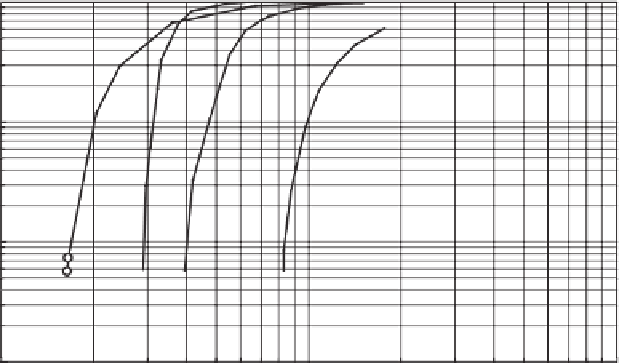Environmental Engineering Reference
In-Depth Information
100
10
Volcanic sand
Glass beads
Fine sand
Touchet silt loam
1
0.1
0.1
1
10
Matric suction head [(
u
a
-
u
w
) /
ρ
w
g
], m
1
10
100
Matric suction (
u
a
-
u
w
), kPa
Figure 9.5
Measured data and calculated relative permeability for air as function of matric
suction (modified from Brooks and Corey, 1964).
Although the air coefficient of permeability decreases and
the water coefficient of permeability increases with increasing
water content, the air permeability values remain significantly
larger than the water permeability values for all water contents
(Fig. 9.6). The difference in the viscosity of air and water is
one of the main reasons for the air coefficient of permeability
being greater than the water coefficient of permeability.
The coefficient of permeability is inversely proportional
to the absolute (i.e., dynamic) viscosity of the fluid,
υ
.The
absolute viscosity of water,
υ
w
, is approximately 56 times
the absolute viscosity of air,
υ
a
, at an absolute pressure
of 101.3 kPa and a temperature of 20
◦
C. Assuming that the
volume-mass properties of a soil do not differ for completely
saturated and completely dry conditions, the saturated water
coefficient of permeability would be expected to be about
56 times smaller than the air coefficient of permeability at
dry condition (Koorevar et al., 1983). It should be noted that
other factors also have an influence on the measured air and
water coefficients of permeability.
Another factor affecting the measured air coefficient of
permeability is the method of compaction. A dynamically
compacted soil usually has a higher air coefficient of perme-
ability than a statically compacted soil at the same density.
The air coefficient of transmission
D
a
can be obtained
by dividing the air coefficient of permeability
k
a
by the
gravitational acceleration
g
. If the gravitational acceleration
is assumed to be constant,
D
a
functions are similar to the
above air permeability
k
a
functions.
9.3.4 Intrinsic Permeability
Intrinsic permeability
K
is a fluid flow property related to
the nature of a porous medium. Intrinsic permeability is
Figure 9.6
Air coefficient of permeability
k
a
and water coeffi-
cients of permeability
k
w
as function of gravimetric water content
for Westwater soil (after Barden and Pavlakis, 1971).
under steady-state flow conditions subjected to small pressure
gradients. The air coefficient of permeability
k
a
decreased
rapidly as optimum water content was approached. At this
point, the air phase becomes occluded, and the flow of air
takes place as the diffusion of air through water. The occluded
stage for soils with high clay content usually occurs at water
contents slightly above optimumwater content (Matyas, 1967;
Barden and Pavlakis, 1971).






























Search WWH ::

Custom Search